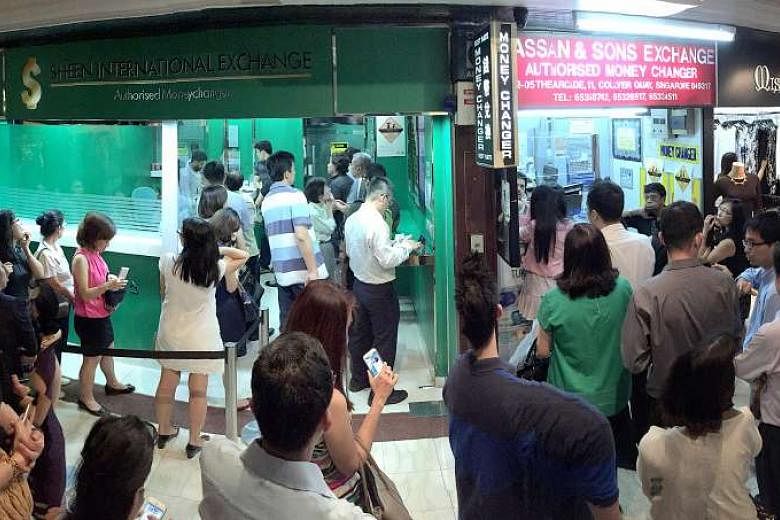Economists expect the central bank to weaken the Singdollar slightly in the light of the slowing economy and full-year inflation looking to enter negative territory.
They tip a weakening of around 1 per cent when the Monetary Authority of Singapore (MAS) releases its biannual monetary policy statement, likely next week.
While the Singdollar has been depreciating against the United States dollar, it has strengthened against regional currencies such as the Malaysian ringgit and Indonesia rupiah.
This suggests there is room for the exchange rate to weaken by around 1 per cent against the basket of currencies of Singapore's major trading partners, said UOB economist Francis Tan.
CIMB Private Bank economist Song Seng Wun also thinks that a "one-off readjustment downwards" of the Singdollar could be possible given that core inflation looks to continue to come below the 0.5 to 1.5 per cent range forecasted by the MAS. Mr Song also tipped the adjustment at around 1 per cent.
Core inflation, which measures everyday out-of-pocket costs, rose a slight 0.2 per cent in August compared with the same period last year.
This means that even if the prices of imported goods go up due to a cheaper Singdollar, the overall impact would still be manageable, said Mr Tan.
Singapore manages its exchange rate within a policy band that the MAS can adjust when it reviews its stance every April and October.
The last time it tweaked its policy was in a surprise move in January to ease the Singdollar's rise.
A weaker Singdollar, which can be achieved by lowering the band's slope or shifting its mid-point downward, helps boost exports as goods from here will become cheaper in foreign markets. The MAS can also widen the band to accommodate greater fluctuations in the exchange rate, a move that is not likely to be adopted this time.
DBS economist Irvine Seah said that with the economy likely to dip into a technical recession - defined as two consecutive quarters of negative growth - the current stance of a modest and gradual appreciation of the Singdollar "becomes a difficult policy to maintain".
He expects the MAS to re-centre the policy band downwards, which would be equivalent to a "one-off devaluation of 2 per cent" of the Singdollar's exchange rate.
Other economists predict that the central bank will "flatten the policy slope" to halt the gradual appreciation of the currency.
Credit Suisse economist Michael Wan thinks there is a 70 per cent chance that the MAS will "do some sort of easing" in the form of adopting a neutral policy stance.
His sentiments are echoed by Bank of America Merrill Lynch economist Chua Hak Bin.
Dr Chua said low employment and loan growth dropping to levels comparable with past recessions suggest that the MAS is more likely to shift to a zero-appreciation stance than allow for a one-off weakening of the Singdollar.
But Barclays economist Leong Wai Ho does not think that the MAS will change its policy stance.
"This feels more like a numbers recession," he said. "This a corrective cyclical slowdown that is mostly centred on the manufacturing sector and not the whole economy.
"This is far from your classic deflationary shock, which is broad based across services and manufacturing sectors that would precipitate job losses."


